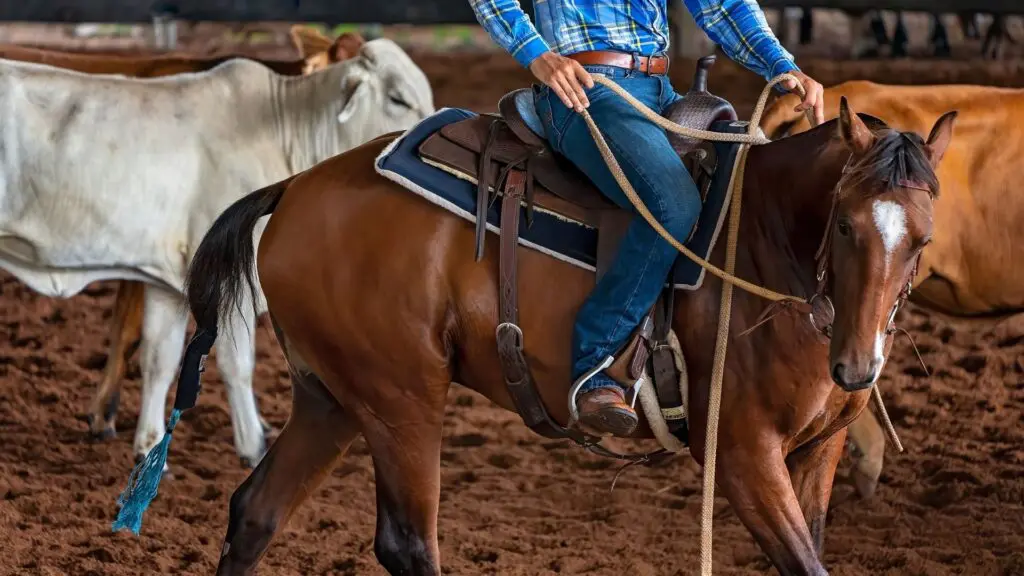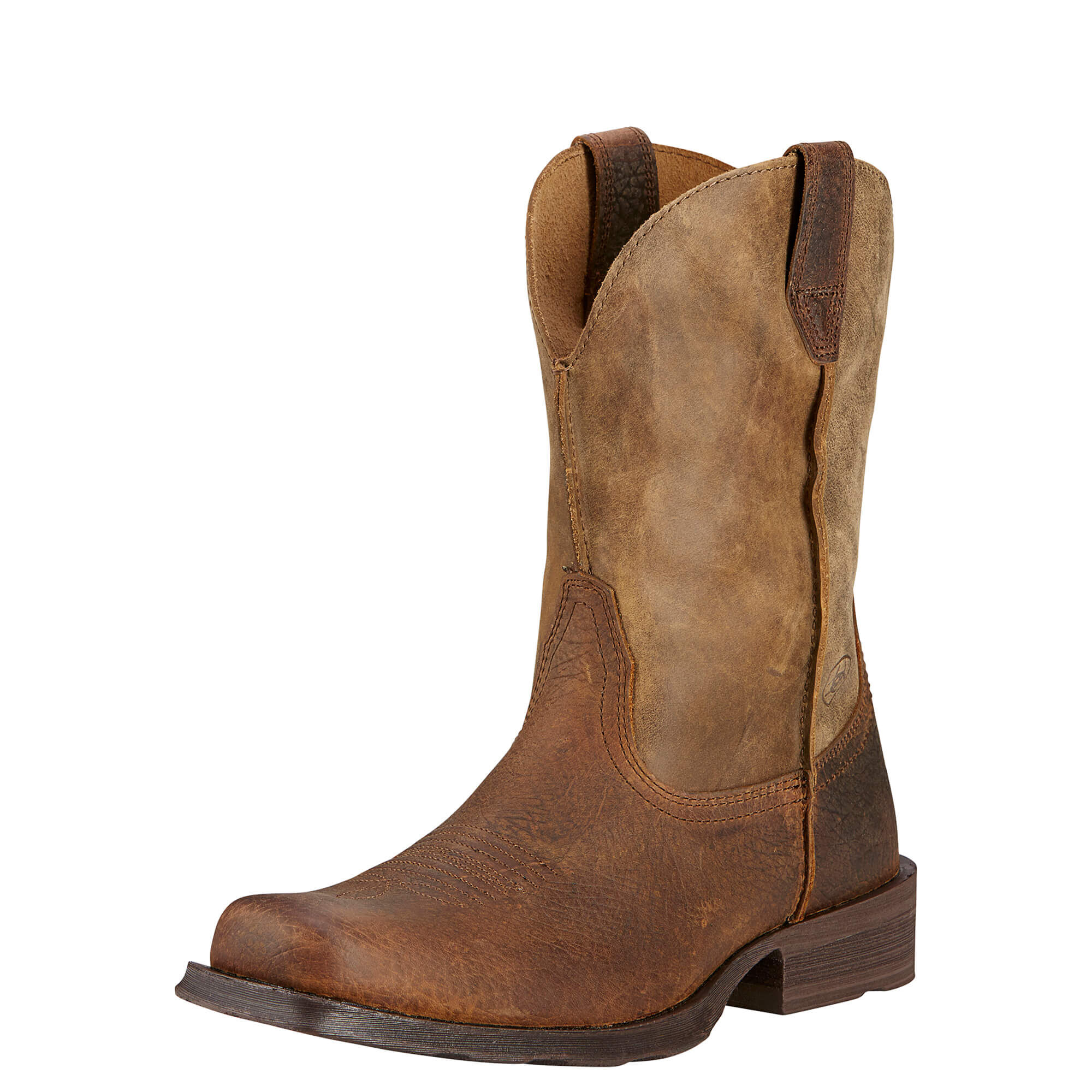Last updated: June 21, 2023
Any links on this page that lead to products on Amazon are affiliate links and I earn a commission if you make a purchase. Thanks in advance – I really appreciate it!
Whether you are a beginner looking for riding boots or an experienced rider, finding and buying horse riding boots is a big deal. They need to conform to safety measures and be comfortable while still being versatile for you to perform different functions.
Horse riding boots must adhere to safety standards, such as a prominent heel of 1 to 1 ½ inch heel and a moderate sole tread that provides adequate grip. They can come in short jodhpur boots to long dress boots and are made in a range of materials such as leather, rubber, and synthetic.
Horse riding is a sport that involves a lot of equipment, both for the horse and the rider. This can be expensive, especially if you want to buy the best products. So how do you choose the right horse riding boots? Below is a guide on what to look for when buying horse riding boots.


What To Look for In Horse Riding Boots
When considering what horse riding boots to purchase, you will be left with a dizzying choice of brands, styles, and makes to choose from, and the urge to purchase them all may be overwhelming, but sticking to what your budget can afford is a good start.
Apart from the obvious cost of the boot, you need to consider the safety requirements. Riding boots need a heel of at least 1 to 1 ½ inches to prevent your foot from slipping through the stirrup, and believe me when I say it’s important; a heel has saved me on more than one occasion.
You want a moderately thin sole to give you enough grip in your stirrup but still allow you to insert and remove your foot from the stirrup without getting your foot stuck because of bulky thick rubberized soles.
I once got on a horse while wearing a pair of Ariat steel-toe work boots. These boots have a thick, wide sole. It wasn’t difficult getting on the horse, but my boot got stuck in the stirrup when I attempted to dismount. Luckily, the horse stood still, and I didn’t get hurt, but it could’ve turned out bad.

Next, consider what discipline you need the boots for. Are you competing or a casual rider? Are you doing dressage where dress boots will be more appropriate, or are you mucking out stables where a paddock boot is better equipped to handle the dirty work?
Also, consider the material that will work best for you. If you are doing groundwork and constantly
walking on wet and muddy ground, then leather may not be the best option; rather, consider a rubber or
synthetic boot.
The season also plays a part, as in winter you may want something a bit more sealed and waterproof for rain and snow, whereas, in summer you need something that is thinner and breathes better, although, after any amount of time working with horses, you are bound to come out hot and sweaty.
Then there is the type of boot you want. Do you want a short boot to which you can add half chaps for versatility and comfort, or are you looking for a long boot for a classier look for competing?
In most cases, if you compete, you will eventually find yourself the owner of at least two styles of boots, one for every day and one for competing.
Here is a quick list of considerations for horse riding boots:
- The fit of the boot
- The height of the boot
- The type of material
- Your riding discipline
- The height of the heel
- The width and smoothness of the sole
Types Of Horse Riding Boots
Horse riding boots come in different shapes and sizes with many different styles, but you can choose from three distinct types of horse riding boots, depending on your needs.
- Long boots
- Jodhpur boots
- Cowboy boots

Long Boots
Long boots are classic-looking leather boots that pull up to just below the knee creating a long and elegant leg, but these can be divided into subcategories that lean towards a specific discipline and offer functionality and support for the rider.
Long-riding boots come in different materials, such as leather, for the classical look and feel, but this does come at a price; they are also now produced in synthetic material for more comfortable everyday wear.
And then there are the long rubber boots that provide you the benefits of long boots for an entry-level budget, but these tend to be extremely hot in summer; the plus point on these is they are low maintenance and waterproof.
Long boots come in two styles: dress boots and field boots.

Dress boots
The dress boot is the classic style boot that is plain, presenting a polished classic look to the rider’s leg.
Dress boots are generally worn for formal hunter classes, dressage, and jumping competitions.
These contemporary dress boots now come with zippers that are slightly off-center toward the inside of the leg, making them more discrete and allowing for an easier on-and-off process.
The curved top line of the boot, called the Spanish cut, can vary in height and cut according to the manufacturer’s style and design, with high cuts making for a long elegant leg.

Field Boots
Field Boots have the addition of laces in the front of the instep to allow an easier and more comfortable fit for people with high insteps. These boots are permissible in hunter classes, eventing, and lower lever dressage; they allow for more flexibility in the ankle.
They also come with zips down the back of the leg for an easy on/off process.

Short Boots
Jodhpur boots are short-riding boots that come up to the ankle and are also sometimes known as paddock boots. These are typically worn by children with jodhpurs, although they have become popular with riders as they are more comfortable to wear daily and more versatile than long boots.
These boots come in various materials such as leather, rubber, and synthetic and different styles, including zips, laces, or pull-on. They are more versatile than long boots as they can be worn for groundwork or for mucking out stables.
However, if you prefer the look and feel of long boots when riding, you can add gaiters or half chaps to these boots to create a two-in-one functionality.

Cowboy boots
There are also various styles of cowboy boots people choose for riding. The most common is the standard cowboy boots and ropers. Standard cowboy boots are typically made from cowhide leather and have a heel that is around 1.5 inches high.
They also have a pointed toe and a smooth sole. Standard cowboy boots are beneficial when used for horseback riding because they provide stability and protection for the rider’s feet and legs. The heel helps keep the rider in the saddle, while the pointed toe allows the rider to slide his foot in the stirrups more easily.
Roper cowboy boots were originally designed for competitive ropers. They have a shorter shaft and heel and a more rounded toe style than standard cowboy boots. This makes them more comfortable and easier to move in when you’re in the saddle or on the ground.
I prefer to ride in ropers because I live in Louisiana, where the weather is hot and humid most of the year, and the short shaft of a roper is much cooler.

How To Take Care Of Your Horse Riding Boots
Depending on the material of your boot, rubber and synthetic can just be wiped down and cleaned with some water and soap. Leather boots, on the other hand, need some extra care. Wipe the dirt off your leather boots with a soft, damp cloth and allow the boots to dry naturally in a ventilated place at room temperature.
Never try to dry them by placing them next to heaters, as this will dry the leather and cause it to crack.
Once the boot is dry, use oil-free leather cream with a soft rag, applying it in circular motions over the boot until it is fully absorbed and the boot feels hydrated.
Once the boot has absorbed the cream and is dry, apply leather shoe polish in a circular motion with a dry cloth. Once dry, brush your boot with a soft cloth or soft-bristled brush to bring out the luster.
Avoid using oil or oily creams as this can create a sticky film on the leather that attracts dirt and grime and stretches the leather out. Do not apply any of the cream/polish to the zips or laces; use a brush to brush the zips off and a damp cloth to remove any dirt or dust in the zipper.
The Benefits Of Horse Riding Boots
Riding boots are beneficial to horse riders in numerous ways.
- The toes are generally reinforced for that unfortunate instance when your horse thinks it’s a great idea to play footsy with you.
- Long boots protect the rider’s calf from chaffing or pinching from the stirrup leathers.
- Distinctive heels prevent your foot from slipping through the stirrup.
- Soles are smooth leather or lightly textured rubber to give you a grip in the stirrup but allow you to easily remove your foot from the stirrup.

The Best Horse Riding Boot Brands
When it comes to horse riding boots, there are a few key factors to consider. First and foremost, you want a boot that is comfortable and well-fitting. After all, you’ll be spending hours in the saddle, so you don’t want your boots to rub or pinch.
Second, you want a boot that offers good support and stability. This is especially important if you’re going to be doing any jumping. Third, you want a durable boot that will stand up to regular wear and tear.
Fourth, you want a boot that looks good but isn’t overpriced. After all, part of the fun of horseback riding is looking the part. Whether you’re just getting started in the world of horse riding or looking for something new to try out, these top brands offer a wide variety of boots that will suit any budget and style.
Conclusion
Horse riding boots, whether you prefer long over short or leather over synthetic, perform a critical function when riding, from being specifically designed with safety benefits and functionality in mind for the rider to protect the rider’s calf and take into consideration their comfort.
Below is a helpful YouTube video that describes various types of horse-riding boots.
FAQs
Do you need special shoes for horseback riding?
Yes. However, you don’t have to go out and buy special horse riding boots. If you already have closed-toe boots with at least a one-inch heel, they will work just fine.
Are paddock boots good for horse riding?
Yes! Paddock boots are excellent for horse riding. Their sturdy construction, safety features, and comfortable design make them ideal for both riding and barn work. They’re a popular choice in English riding and provide good ankle support and a secure fit, essential for safety and comfort while in the saddle.
